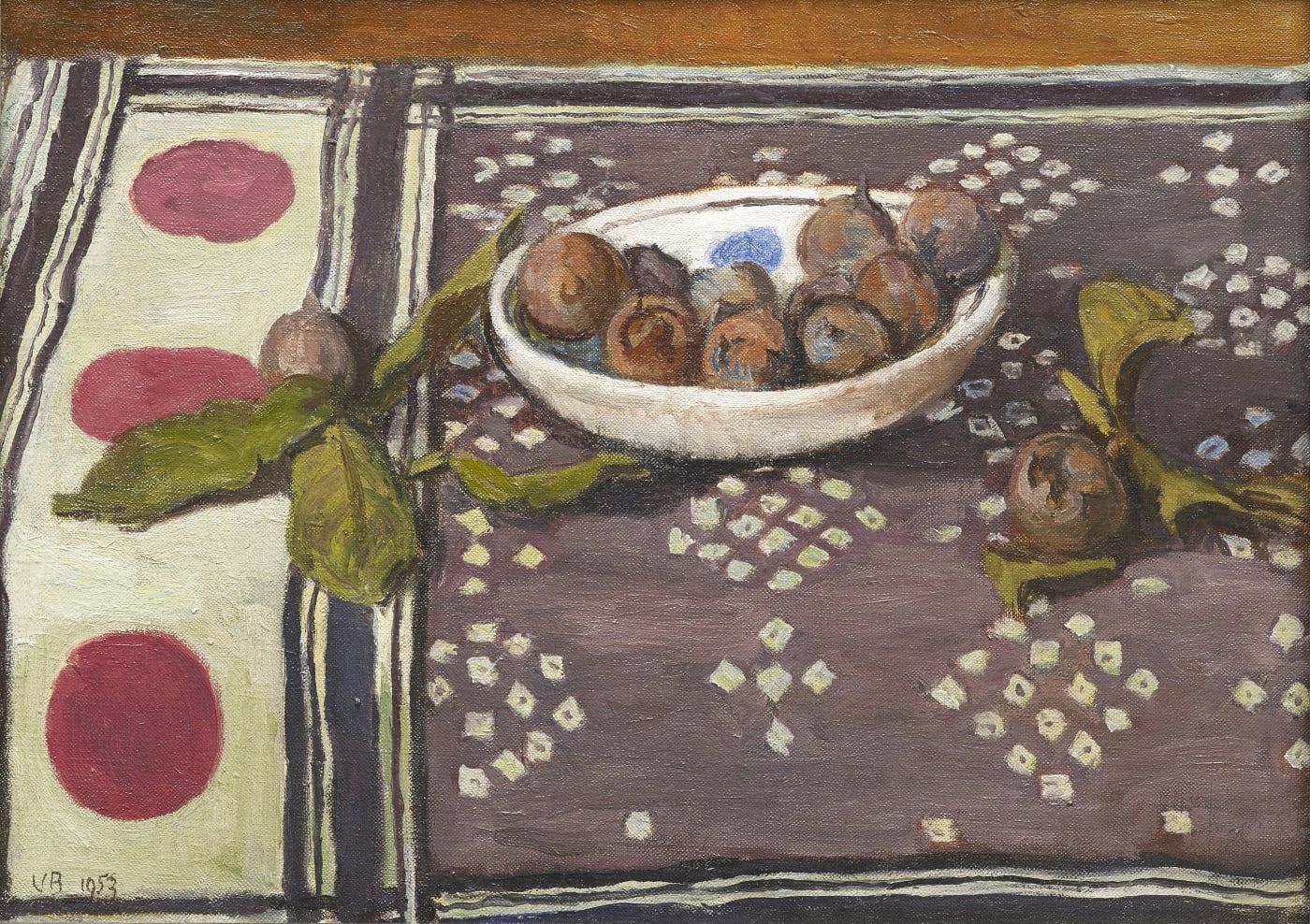
The Bloomsbury Group were a liberal band of artists, writers and intellectuals, allied through their political ideals, love of fierce intellectual debate and stance on sexual equality, whose artistic theories and experiments dramatically refashioned the landscape of British Modernism.
Writer Dorothy Parker is considered to have crafted the description that they "lived in squares, painted in circles and loved in triangles".
‘Lived in squares’
In 1904, sisters Vanessa Bell and Virginia Woolf moved into 46 Gordon Square, Bloomsbury, central London along with their two brothers, Adrian and Thoby Stephen. Whilst the death of their father, just prior to their move, left the siblings orphaned it also marked a partition from and rejection of their strict Victorian upbringing in favour of a new lifestyle governed by modern liberalism. Bell and Woolf opened their new Bloomsbury home to like-minded, artistic individuals such as Duncan Grant, John Nash, Henry Lamb and Edward Wadsworth. Accordingly, 46 Gordon Square was transformed into the beating heart of the Bloomsbury group, where artists collaborated, shared ideas and formed close bonds - and in some cases, relationships.
The group might be better understood if divided into two sub-groups: writers and artists. Both groups met weekly at Woolf and Bell’s home, the former, more literary minded, on Thursdays and the latter artistically inclined, on Fridays. Separation between domestic interior spaces and exterior public realms has played an instrumental role in the construction of gendered identities and stereotypes in the Western society. However, Bell and Woolf were pioneering in their reconfiguration of such binaries - they initiated the traditionally domestic home as a multidisciplinary setting for domesticity, collaborative work, intellectual debate and entertainment. Where domestic interiors and their function had been previously marginalised in wider society, their practical and aesthetic potential was celebrated in full by this group.
An informal atmosphere was encouraged, fuelled by a spirit of rebellion against what they saw as the constraints of their conservative Victorian upbringing and the standards instilled in them by their parents.
‘Painted in circles’
Art critic Roger Fry was introduced to the group in 1910 and became one of its most influential members. It was during this year that Fry’s exhibition Manet and the Post-Impressionists marked a crucial moment in the history of modernism and instigated a lasting impression on the young Bloomsbury artists, many of whom were introduced to the work of contemporary European painters and post-impressionism for the first time.
Fry’s exhibition presented new ways of thinking about art which invigorated certain members of the Bloomsbury group, namely Bell and her later partner Grant. The three artists began to experiment with avant-garde techniques and were amongst the first painters in Britain to experiment with purely abstract paintings. In 1912 a second Post-Impressionist Exhibition was held which included works by both Bell and Grant and it is here that the term ‘Bloomsbury Group’ was coined, in reference to the area in which they lived and worked.
A few months after the closing of this exhibition, Fry, Bell and Grant established the Omega Workshop. The Omega ethos was governed by an avant-garde aim to celebrate the decorative and break down any segregation between fine art and design. Just as Bell used her own home to explore the connection between fine art and domesticity, Fry and Grant similarly encouraged young artists, such as Wyndham Lewis and Paul Nash, to design pottery, furniture, fabrics and interiors. These designs became a vital tool in deconstructing the binary that separated interior designs as a mere craft from interior design as a fine artform. The group’s instinct for collaborative decoration transcended Fry’s philosophy from the realm of theory into that of physical ornamentation and decoration. Individual works were designed and constructed by multiple different artists, and the spirit of collaborative working perfused through the group. For the Bloomsbury group members, the post-impressionists aesthetic was no longer hung within the confines of the gallery; it began to infiltrate every aspect of the home.
‘Loved in triangles’
The social lives of the Bloomsbury group were mainly focused within the various houses owned by the members and decorating these houses was of the utmost importance. Fabrics, ceramics, panels, furniture and canvases embraced the walls of these houses. Unquestionably unrivalled, in terms of its importance within the group’s social life and it’s pioneering interior design, was Vanessa Bell’s Sussex countryside home, Charleston farmhouse.
Bell first moved to Charleston during the First World War, along with Grant, a nurse, a housemaid, a cook and, over time, various members of the group would stay for extended periods including a number of Grant’s lovers. The group held progressively liberal ideas about sex and relationships and their free-thinking bohemia nurtured an atmosphere of acceptance and celebration toward sexual liberation and gender fluidity. Grant had relationships with members Lytton Strachey and John Maynard Keynes, and these complex relationships and affairs infuse much of his work. At Charleston, seductive male nudes and homoerotic imagery fill canvas’s, panels and ceramics. It is still this aspect of their lives which fascinates people even today.



